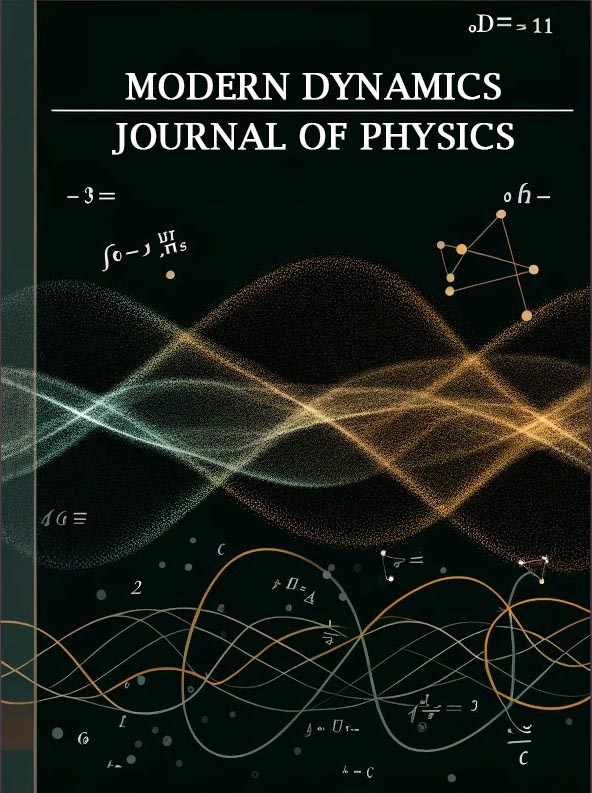The Role of Gravitational Waves in Understanding the Universe's Evolution
DOI:
https://doi.org/10.36676/mdjp.v1.i2.10Keywords:
Gravitational, Waves, Understanding, Universe's, EvolutionAbstract
Gravitational waves, predicted by Einstein's General Theory of Relativity and first detected in 2015 by LIGO, have revolutionized our understanding of the universe. These ripples in spacetime, generated by cataclysmic astrophysical events such as black hole and neutron star mergers, offer a novel observational tool that complements traditional electromagnetic astronomy. This paper explores the profound implications of gravitational waves for cosmology and astrophysics, highlighting their role in probing the early universe, understanding stellar evolution, and measuring cosmic distances. The detection of gravitational waves has provided direct evidence of black hole mergers and neutron star collisions, enhancing our knowledge of these exotic objects and the processes leading to their formation. Additionally, gravitational waves from the early universe hold the potential to reveal conditions shortly after the Big Bang, offering insights into cosmic inflation. As gravitational wave observatories advance and new detectors like LISA come online, the continued study of these waves promises to deepen our understanding of the universe's evolution and its fundamental physical laws.
References
Abbott, B. P., Abbott, R., Abbott, T. D., Abernathy, M. R., Acernese, F., Ackley, K., ... & Zweizig, J. (2016). Observation of gravitational waves from a binary black hole merger. Physical Review Letters, 116(6), 061102. https://doi.org/10.1103/PhysRevLett.116.061102
Abbott, B. P., Abbott, R., Abbott, T. D., Acernese, F., Ackley, K., Adams, C., ... & Zweizig, J. (2017). GW170817: Observation of gravitational waves from a binary neutron star inspiral. Physical Review Letters, 119(16), 161101. https://doi.org/10.1103/PhysRevLett.119.161101
Anil Kumar. (2018). Advances in Gravitational Wave Astronomy: Observations and Implications. Universal Research Reports, 5(2), 297–303. Retrieved from https://urr.shodhsagar.com/index.php/j/article/view/1269
Amaro-Seoane, P., Audley, H., Babak, S., Baker, J., Bender, P., Berti, E., ... & McNamara, P. (2017). Laser Interferometer Space Antenna. arXiv preprint arXiv:1702.00786.
Berti, E., Buonanno, A., & Will, C. M. (2005). Testing general relativity and probing the merger history of massive black holes with LISA. Classical and Quantum Gravity, 22(18), S943. https://doi.org/10.1088/0264-9381/22/18/S08
Buonanno, A., & Damour, T. (1999). Effective one-body approach to general relativistic two-body dynamics. Physical Review D, 59(8), 084006. https://doi.org/10.1103/PhysRevD.59.084006
Cutler, C., & Thorne, K. S. (2002). An overview of gravitational-wave sources. Proceedings of the Royal Society of London. Series A: Mathematical, Physical and Engineering Sciences, 360(1797), 303-317. https://doi.org/10.1098/rsta.2001.0950
Finn, L. S., & Chernoff, D. F. (1993). Observing binary inspiral in gravitational radiation: One interferometer. Physical Review D, 47(6), 2198. https://doi.org/10.1103/PhysRevD.47.2198
Maggiore, M. (2000). Gravitational wave experiments and early universe cosmology. Physics Reports, 331(6), 283-367. https://doi.org/10.1016/S0370-1573(99)00102-7
Mrs. Monika. (2023). Black Holes and Information Paradox: Resolving the Hawking Paradox. Innovative Research Thoughts, 9(1), 336–342. Retrieved from https://irt.shodhsagar.com/index.php/j/article/view/617
Schutz, B. F. (1986). Determining the Hubble constant from gravitational wave observations. Nature, 323(6086), 310-311. https://doi.org/10.1038/323310a0
Shrivastava, S. S., S.C. Soni, & Nitin Tenguria. (2017). A Review over the Design of Wind Turbine Blade for Changing Its Materials and Profile Shape. Universal Research Reports, 4(2), 248–254. Retrieved from https://urr.shodhsagar.com/index.php/j/article/view/104
Thorne, K. S. (1995). Gravitational waves. In Proceedings of the 1994 Les Houches School on Astrophysical Sources of Gravitational Waves. Cambridge University Press.
Downloads
Published
How to Cite
Issue
Section
License
Copyright (c) 2024 Modern Dynamics Journal of Physics

This work is licensed under a Creative Commons Attribution-NonCommercial 4.0 International License.
This license requires that re-users give credit to the creator. It allows re-users to distribute, remix, adapt, and build upon the material in any medium or format, for noncommercial purposes only.
